Exclusive Deals & Trending Items
You are witnessing a significant shift in the global economy. Gold is regaining its role as a reserve currency.
The historic rise of gold as a trusted asset is not new. It has been a cornerstone of financial stability for centuries.
An article by Joshua D Glawson on Money Metals highlights this. Understanding gold’s past and current trends is crucial for investors and economies worldwide.
The evolution of gold as a reserve currency has big implications for the global economy. Its resurgence is worth noting.
Key Takeaways
- The importance of understanding gold’s history and its potential future.
- The role of gold in the global economy and its significance.
- Current trends in gold’s rise as a reserve currency.
- Insights from Joshua D Glawson’s article on Money Metals.
- The implications of gold’s resurgence for investors and economies.
The Ancient Legacy of Gold as Currency
Gold has been key in human economies for thousands of years. It was used as money, a safe place to store value, and a sign of wealth. Its role in our financial systems is rooted in its unique qualities and history.
Gold’s First Emergence as a Medium of Exchange
Gold first became a trade item in ancient times. Its rarity, durability, and beauty made it perfect for bartering. Early societies valued gold, using it to start commerce, setting the stage for today’s economies.
The earliest gold money use was in Egypt and Mesopotamia around 1500 BCE. Gold coins were made for trade, taxes, and savings. As trade grew, gold became a common currency across regions.
Early Civilizations and Their Gold-Based Economies
Gold was crucial in the economies of ancient Egypt, Greece, and Rome. These societies used gold coins and decorated with it, showing its value. Gold’s widespread use in these times cemented its role as a global currency.
The Greeks minted gold coins that were accepted everywhere in the Mediterranean. The Romans also used gold coins, like the aureus, widely. Even after the Roman Empire fell, gold remained a key part of economies.
Gold’s Inherent Properties That Made It Ideal for Currency
Gold’s qualities made it perfect for currency. It’s rare, lasts long, can be split, and has a high value for its weight. These traits made gold attractive for trade and storing wealth.
Gold also doesn’t rust and looks great, making it even more desirable. Its lasting qualities and beauty have kept gold popular for coins, jewelry, and wealth storage, showing its lasting value as currency.
The Gold Standard Era: When Gold Ruled the World
Exploring the gold standard era shows how gold shaped global economies. The gold standard made currencies backed by gold. It was key for international trade and economic stability for centuries.


The Birth and Evolution of the Classical Gold Standard
The classical gold standard started in 1816 with Britain. It made sure currencies were tied to gold, keeping exchange rates stable and helping trade. Over time, countries adjusted their money policies to keep their currency’s value against gold.
Key features of the classical gold standard included:
- Currency convertibility: Currencies could be exchanged for gold.
- Fixed exchange rates: Exchange rates were fixed, reducing transaction risks.
- Monetary discipline: Countries had to maintain gold reserves to back their currencies.
How the Gold Standard Shaped International Trade
The gold standard greatly impacted international trade. It created a stable money system for cross-border deals. With currencies tied to gold, countries trusted each other’s money, making trade safer.
This trust boosted trade, as merchants and investors felt secure in their deals. The gold standard also encouraged nations to work together for a stable global money system.
The Economic Stability of the Gold Standard Period
The gold standard era was marked by economic stability. There was low inflation and stable exchange rates. The gold standard’s rules helped countries keep their money policies sound, avoiding too much money printing.
The gold standard’s benefits included:
- Low inflation: It limited money printing, keeping prices steady.
- Stable exchange rates: Fixed rates made trade safer and easier.
- Economic growth: The stability encouraged investment and growth.
Learning about the gold standard era helps us understand gold’s role in world economies. Its legacy still shapes gold market analysis and money policies today.
Gold’s Historic Decline as the World’s Reserve Currency
Gold’s status as the world’s reserve currency started to fade during times of global turmoil. The early 20th century saw two World Wars, causing huge economic changes and affecting gold’s role.
World Wars and the Suspension of the Gold Standard
World War I led to many countries suspending the gold standard. They needed to print more money to fund their wars, not being tied to gold. This was the start of gold losing its top spot as a reserve currency.
The wars also made people doubt gold’s value. As countries tried to rebuild, they saw the gold standard as a barrier to economic growth.
The Bretton Woods System: Gold’s Last Stand
In 1944, the Bretton Woods system was set up. It made currencies tied to the US dollar, which was tied to gold at $35 per ounce. This made gold a key part of the dollar-based system.
The system aimed to stabilize the global economy and boost trade. But, the US couldn’t keep the gold peg, as the dollar was overvalued.
Nixon Shock: The Final Severance from Gold
In 1971, the US ended the dollar’s direct link to gold. This event, known as the Nixon Shock, ended gold’s role as a reserve currency.
The Nixon Shock changed the global economy, moving towards fiat currencies and reducing gold’s importance.
| Event | Year | Impact on Gold |
|---|---|---|
| World War I | 1914-1918 | Suspension of the gold standard |
| Bretton Woods System | 1944 | Establishment of a dollar-based gold standard |
| Nixon Shock | 1971 | End of dollar’s convertibility to gold |
The decline of gold as a reserve currency came from global events and economic shifts. Knowing these events helps us understand the global monetary system’s evolution.
The Fiat Currency Era and Its Consequences
The fiat currency era is marked by government-issued money without any backing. It has big effects on our financial world. Knowing how fiat currency works is key.
The Rise of the US Dollar as the Global Reserve Currency
After the Bretton Woods system fell, the US dollar became the top currency worldwide. The US’s strong economy and the dollar’s use in trade helped it rise. Now, the dollar is the go-to currency for international deals.
This has changed global finance a lot. It makes trade easier with a common currency. But, it also makes countries with a lot of dollar debt more vulnerable.
Inflation, Currency Debasement, and Economic Instability
Fiat currency is linked to more inflation, money losing value, and economic troubles. Without a gold standard, governments can print more money. This can cause inflation, especially in countries with loose money policies.
When a currency loses value, it’s called debasement. This can make people lose trust in money. Such instability can hurt not just the local economy but also the world.
The Growing Distrust in Government-Issued Currencies
People are starting to doubt government money, thanks to bad money policies and things like quantitative easing. This doubt has made more people look at gold as a safe choice.
It’s important to know the risks of fiat money. Diversifying your investments can help protect you from these risks.
| Currency | Inflation Rate | Currency Value Against USD |
|---|---|---|
| USD | 2% | – |
| EUR | 1.5% | 0.88 |
| INR | 4% | 74.83 |
It’s vital to understand fiat currency’s effects on your money. As the world’s economy changes, keeping up with finance news is crucial.
Gold Historic Performance Through Economic Crises
When economic troubles arise, many investors look to gold as a safe choice. This section looks at how gold has performed during major economic downturns. We’ll focus on the 2008 financial crisis and the COVID-19 pandemic.
Gold During the 2008 Financial Crisis
The 2008 financial crisis was a key moment for gold. It showed gold’s ability to be a safe-haven asset. As the world’s financial markets were in chaos, gold prices soared.
Before the crisis, gold prices were rising due to worries about inflation and currency issues. As the crisis worsened, gold’s price jumped by over 25% in 2008.
COVID-19 Pandemic and Gold’s Safe Haven Status
The COVID-19 pandemic tested gold’s status as a safe haven. As the virus spread and economies were disrupted, gold prices hit new highs.
In August 2020, gold prices hit $2,000 per ounce. This was a big milestone, showing gold’s value as a store of value in uncertain times.
Historic Gold Price Movements During Major Economic Downturns
Gold’s performance in economic crises is not new. Throughout history, gold has kept its value or even gone up during tough times.
| Economic Crisis | Gold Price Before | Gold Price After | Percentage Change |
|---|---|---|---|
| 2008 Financial Crisis | $833/oz (2007 avg) | $869/oz (2008 avg) | +4.3% |
| COVID-19 Pandemic | $1,294/oz (2019 avg) | $1,770/oz (2020 avg) | +37.1% |
| 1970s Oil Shock | $35/oz (1970) | $165/oz (1974) | +371.4% |
Comparative Analysis of Gold vs. Other Assets
Gold stands out when compared to other assets in economic crises. While stocks and bonds often fall, gold usually keeps its value or goes up.
For example, in 2008, the S&P 500 dropped by over 38%. But gold increased by more than 25%.
Recovery Patterns Following Crisis Periods
After economic crises, gold prices often keep rising or stay stable. This shows its role as a long-term store of value.
Understanding gold’s past performance in economic crises can help investors prepare for future downturns.
Central Banks’ Renewed Interest in Gold Reserves
Gold is gaining attention from central banks around the world. They want to lessen their reliance on traditional currencies. This move is part of a larger trend where countries are looking to diversify their assets due to economic uncertainty.
Global Trends in Central Bank Gold Purchasing
Over the last decade, central banks have been boosting their gold reserves. The World Gold Council reports that in 2022, they bought 456 tonnes of gold. This is the highest amount since 1967. They are doing this to spread out their investments and protect against economic downturns.
This trend is seen everywhere, not just in one region. Banks from both emerging and developed countries are buying gold. This shows that gold is seen as a safe asset and a good store of value worldwide.
Why Nations Are Diversifying Away from Dollar Reserves
The US dollar has been the top global currency for a long time. But, it’s facing challenges from various economic and political issues. Countries are trying to lessen their dollar dependence to avoid risks tied to US policies and global tensions.
By adding gold to their reserves, countries can make their portfolios more balanced. This reduces their risk from any one currency. As Jim O’Neill, a former Goldman Sachs economist, said, “Gold is a key diversifier for central banks. It helps protect against currency swings and economic instability.”
“The role of gold in central banks’ reserve management is becoming increasingly important as countries look to diversify their reserves and reduce their reliance on the US dollar.”
The Reserve Bank of India’s Gold Strategy
The Reserve Bank of India (RBI) is also increasing its gold reserves. The RBI’s plan is not just to buy gold but to use it to boost the country’s economic stability.
Recent Gold Reserve Additions by RBI
The RBI has been buying gold in recent years, adding a lot to its reserves. This is part of a bigger plan to diversify India’s assets and strengthen its finances.
Strategic Implications for India’s Economy
The RBI’s gold strategy has big implications for India’s economy. By growing its gold reserves, India can better handle economic shocks. It can also improve its credit standing and influence the global gold market.
As the world deals with economic uncertainty, gold’s role in central banks’ reserves will grow. For India, its gold reserves will be key in shaping its economic policies and strategies in the future.
The BRICS Nations and Gold-Backed Currencies
The BRICS nations are thinking about using gold-backed currencies. This is part of a bigger plan to reduce their use of the US dollar. Countries like Brazil, Russia, India, China, and South Africa want to be more financially stable and independent.
Dedollarization Efforts Among Emerging Economies
More countries are moving away from the dollar. This is because the dollar’s value can change a lot. The BRICS nations are leading this change, using their economic power to create a more balanced financial world.
They are using different strategies, like:
- Using local currencies in international trade
- Creating new payment systems
- Building up gold reserves to back their currencies
India’s Position Within BRICS Financial Initiatives
India is a key player in BRICS financial plans. It wants a fairer global financial system. India is working with BRICS to reduce its dollar dependence and create a more stable money system.
The Indian government is buying more gold. This move helps India’s financial health and supports the effort to challenge the dollar’s dominance.
Proposals for New Gold-Backed Trading Mechanisms
The BRICS nations are looking into new ways to trade and invest. They want to create a gold-backed currency or a currency basket. This could be a big change for the global economy, offering a more stable way to value and exchange goods.
Some ideas include:
- Gold-backed bonds for trade financing
- A BRICS currency basket to lessen dollar reliance
- Gold-backed cryptocurrencies for international deals
Gold’s Unique Role in India’s Economic and Cultural Landscape
In India, gold is more than just a metal. It stands for wealth, prosperity, and cultural heritage. Gold’s role in the country touches many areas of the economy and society.
India’s Historical Relationship with Gold
India’s love for gold goes back to ancient times. Gold has been key in Indian culture, economy, and history. It’s used in jewelry, coins, and other items. Gold has been a symbol of prosperity, used in ceremonies and rituals.
Gold’s importance in India’s trade is also significant. The country is one of the biggest gold consumers. A lot of global gold demand comes from India.
Gold’s Importance in Indian Household Savings and Investment
In India, gold is a top choice for investment. It’s seen as a safe haven during tough economic times. Gold jewelry and coins are popular investments, especially during festivals.
Gold is a big part of household savings in India. Reports show that Indian households hold a lot of gold. This gold is a significant part of the country’s wealth.
How Gold Influences India’s Economic Policies
Gold is key in shaping India’s economic policies. It affects trade and monetary policies. The high demand for gold impacts the trade balance and foreign exchange reserves.
The Reserve Bank of India (RBI) looks at gold prices when making monetary policies. The RBI has schemes like the Gold Monetization Scheme and Sovereign Gold Bonds. These aim to reduce gold imports and use idle household gold.
Gold Monetization Schemes and Sovereign Gold Bonds
The Indian government has launched initiatives to use household gold. The Gold Monetization Scheme lets people deposit gold in banks. Banks can then lend it to jewelers and other industries.
Sovereign Gold Bonds are another way to invest in gold. These bonds are issued by the RBI on behalf of the government. They are denominated in grams of gold.
Digital Gold and Technological Innovations
Digital gold is changing the finance and investment world. It’s important to know how technology is shaping gold’s future.
Gold-Backed Cryptocurrencies and Tokens
Gold-backed cryptocurrencies and tokens are new in the digital world. They let you own digital gold, offering easy transfer and divisibility. Key advantages include:
- Enhanced security through blockchain technology
- Increased liquidity in the gold market
- Potential for fractional ownership
India’s Digital Gold Market Growth
India, a big gold consumer, is seeing its digital gold market grow. Digital gold buying, selling, and storing is attracting young investors. Key drivers of this growth include:
- Increasing smartphone penetration
- Rising demand for digital payment systems
- Government initiatives to promote digital economy
The Intersection of Traditional Gold Markets and Digital Finance
The mix of traditional gold markets and digital finance is bringing new chances and hurdles. Digital platforms are changing how we deal with gold markets. Some key implications include:
- Increased accessibility to gold investment
- Potential for reduced transaction costs
- Need for robust regulatory frameworks
As digital gold evolves, knowing about these tech advancements is key for smart investment choices.
Challenges to Gold’s Resurgence as a Reserve Currency
Gold’s comeback as a reserve currency faces many hurdles. The global economy is changing, making people rethink gold’s role. Gold has always been a safe value, but becoming a main reserve currency again is tough.
Practical Limitations of a Modern Gold Standard
One big problem is making a modern gold standard work. It means a country’s money must be backed by gold. This limits how a government can handle its economy.
Today’s economy is too complex for a strict gold standard. The world’s gold supply also can’t keep up with global trade and finance.
The inflexibility of a gold standard can cause economic problems. In tough times, countries might find it hard to use money policies if their currency is tied to gold. This can make downturns worse, making recovery hard.
Political Resistance from Current Reserve Currency Beneficiaries
Another big challenge is opposition from countries that benefit from the current system, especially the US dollar. The US gets a lot of benefits from the dollar being the top reserve currency. It’s likely to fight any big changes that could hurt the dollar’s status.
Geopolitical tensions also play a part. Countries with lots of gold, like the US, might not want gold to be more important. This could reduce their power in the global financial world.
Market Liquidity and Volatility Concerns
Gold’s market can be very volatile, which is a worry. This makes it hard for central banks to handle their gold well. Also, gold markets can be hard to move, especially when many countries want to buy or sell at the same time.
To deal with these issues, we need better financial tools. We need to create new gold-backed products or grow the ones we have. This could help manage gold’s price and make markets more liquid.
Future Outlook: Gold’s Potential Trajectory
The future of gold is set to be shaped by many factors. These include geopolitical events and market trends. Gold has always been a safe choice during economic troubles. As the world economy changes, it’s key to look at gold’s future and its impact on investors, especially in India.
Projected Gold Price Trends for Indian Investors
Indian investors are very interested in gold prices. This is because gold is a big part of their savings and investments. Looking at past gold prices and market trends can help guess future prices. Things like inflation, currency changes, and global gold demand are important.
India’s growing economy means gold demand will likely stay strong. Also, government plans like the Sovereign Gold Bond scheme make gold a good investment choice.
Geopolitical Factors Influencing Gold’s Status
Geopolitical issues greatly affect gold’s status as a safe asset. Issues like trade wars and economic sanctions can make gold prices go up. Global events like elections and natural disasters also affect gold prices.
The push for dedollarization by some countries and the growth of new currencies might change gold’s role in finance.
How You Can Position Your Portfolio for Gold’s Resurgence
To get ready for gold’s possible comeback, think about adding gold-related investments to your portfolio. You can use physical gold, gold ETFs, or mining stocks. It’s also important to keep up with market and global news that could affect gold prices.
By looking at gold historical data and staying current with market analysis, you can make smart investment choices. This way, you might profit from gold’s comeback.
Conclusion: Gold’s Enduring Value in an Uncertain World
Gold’s value has stood the test of time, from ancient times to today. It’s a key asset in uncertain times. Knowing about gold’s past, present, and future is vital for investors and economies.
Gold has proven to be a safe haven during crises like the 2008 financial crisis and the COVID-19 pandemic. Its price history shows it keeps its value, making it a solid choice for diversifying investments. Central banks and BRICS nations are also turning to gold, highlighting its importance.
In India, gold holds deep cultural and economic significance. When planning your investments, understanding gold’s potential and its place in your portfolio is crucial. With its long history and the rise of digital gold, gold’s future looks bright.






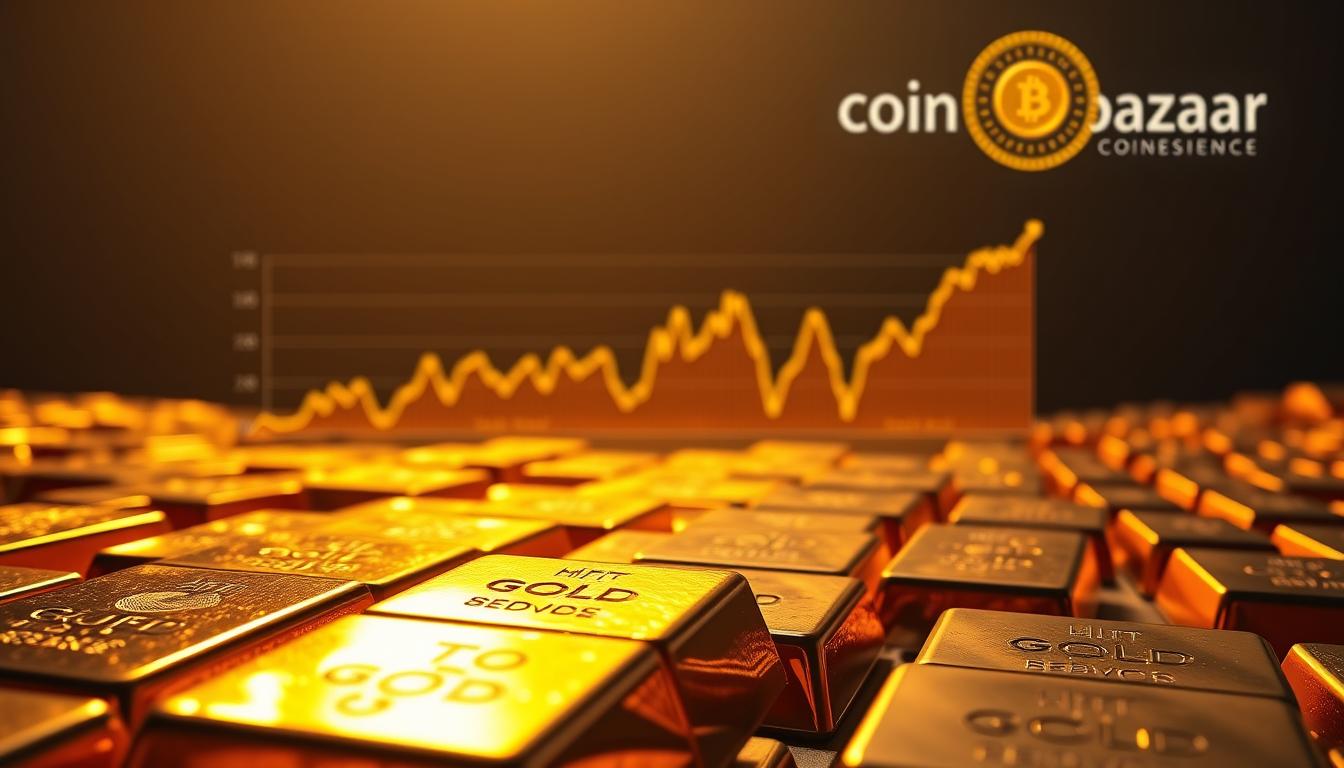






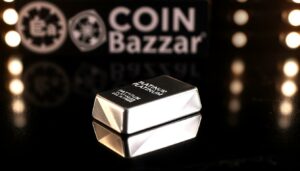
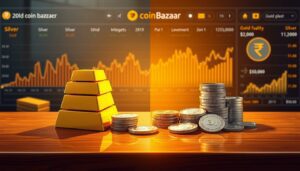

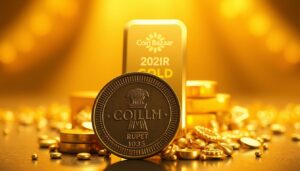
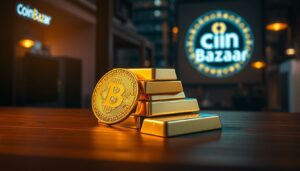



3 Responses
The resurgence of gold as a reserve currency really highlights how traditional assets can outperform in uncertain economic climates. It’s a reminder that what’s old doesn’t always lose its relevance.
Reading about gold’s evolution as a reserve currency really got me thinking. It’s impressive that it’s still seen as a safe haven in times of crisis. Do you think the trend will continue, or are we likely to see more reliance on digital currencies in the future?
It’s interesting to see how gold is reclaiming its role in the global economy after decades of being sidelined. This could signal a shift in how countries manage their reserves. If this trend continues, we could be looking at a fundamental change in international finance.